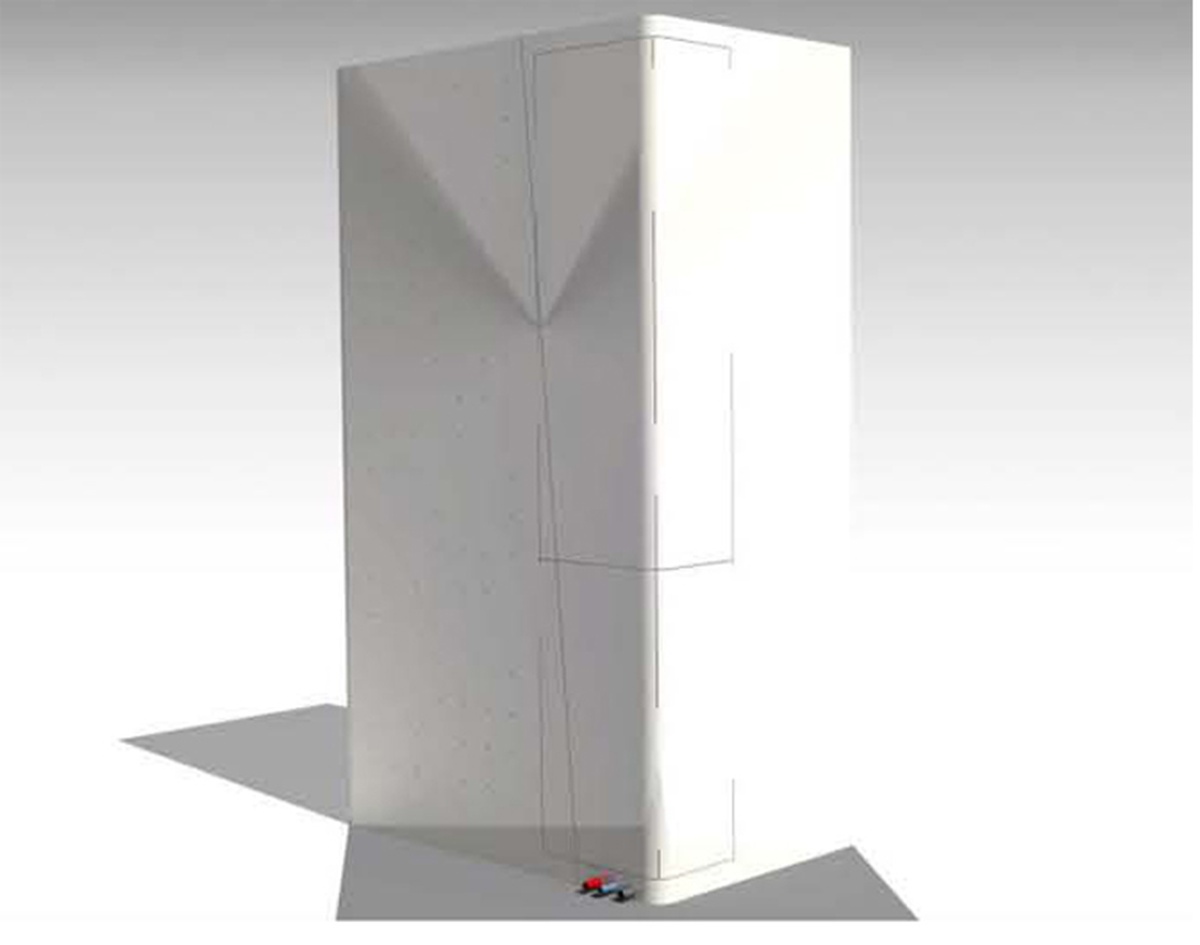Museo del Design del Friuli Venezia Giulia – Associazione di Promozione Sociale
P. IVA e CF 02863400301 – info@mudefri.it
Beach huts even had wheels: ‘bathing machines’ were towed directly into the water to avoid bathers having to parade across the beach in their costumes. In Britain there is a curious “Beach Hut of the Year” competition in which people can vote their favourite beach hut.
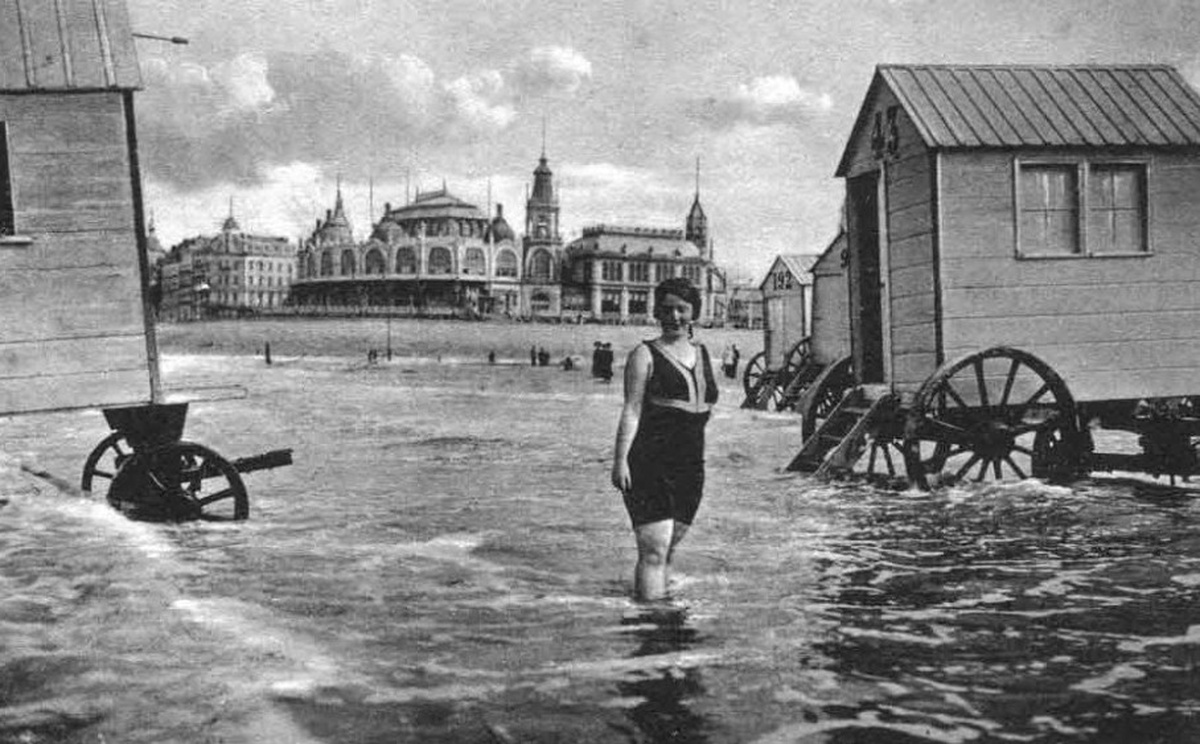
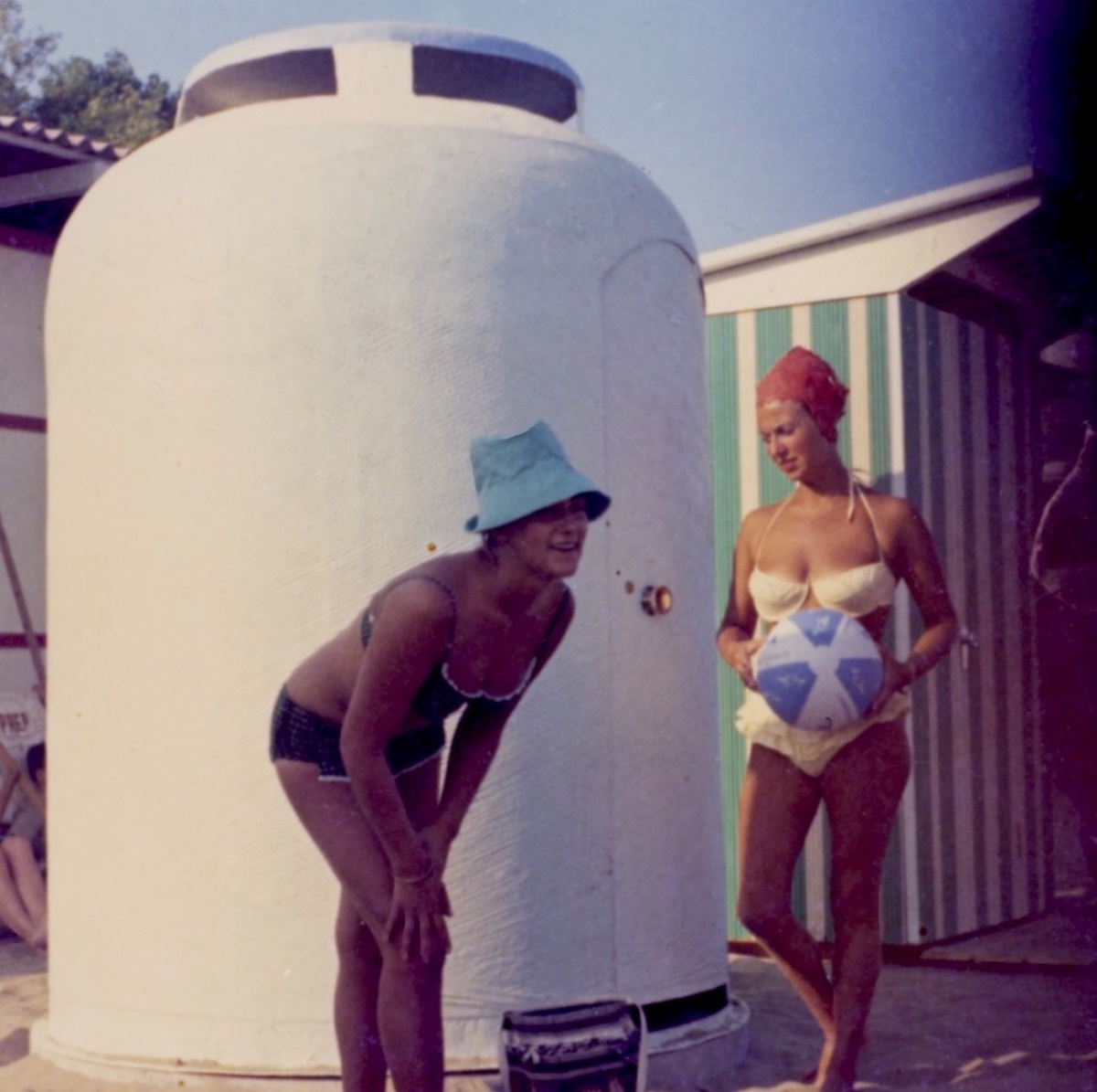
The company Vetroresina© became a world leader in the manufacture of maxi-sized tanks. The material was suitable for creating large, lightweight, leak-proof containers, which with the appropriate finishing, could be adapted to a wide variety of uses. You have to be able to think outside the box to break away from the idea of the traditional beach hut – which always looks like a little house – and imagine one that looks more like a space capsule! 60s curves blend in harmoniously with the piers at Lignano Pineta, the urban development planned by architect Marcello D’Olivo, where these photographs were taken.
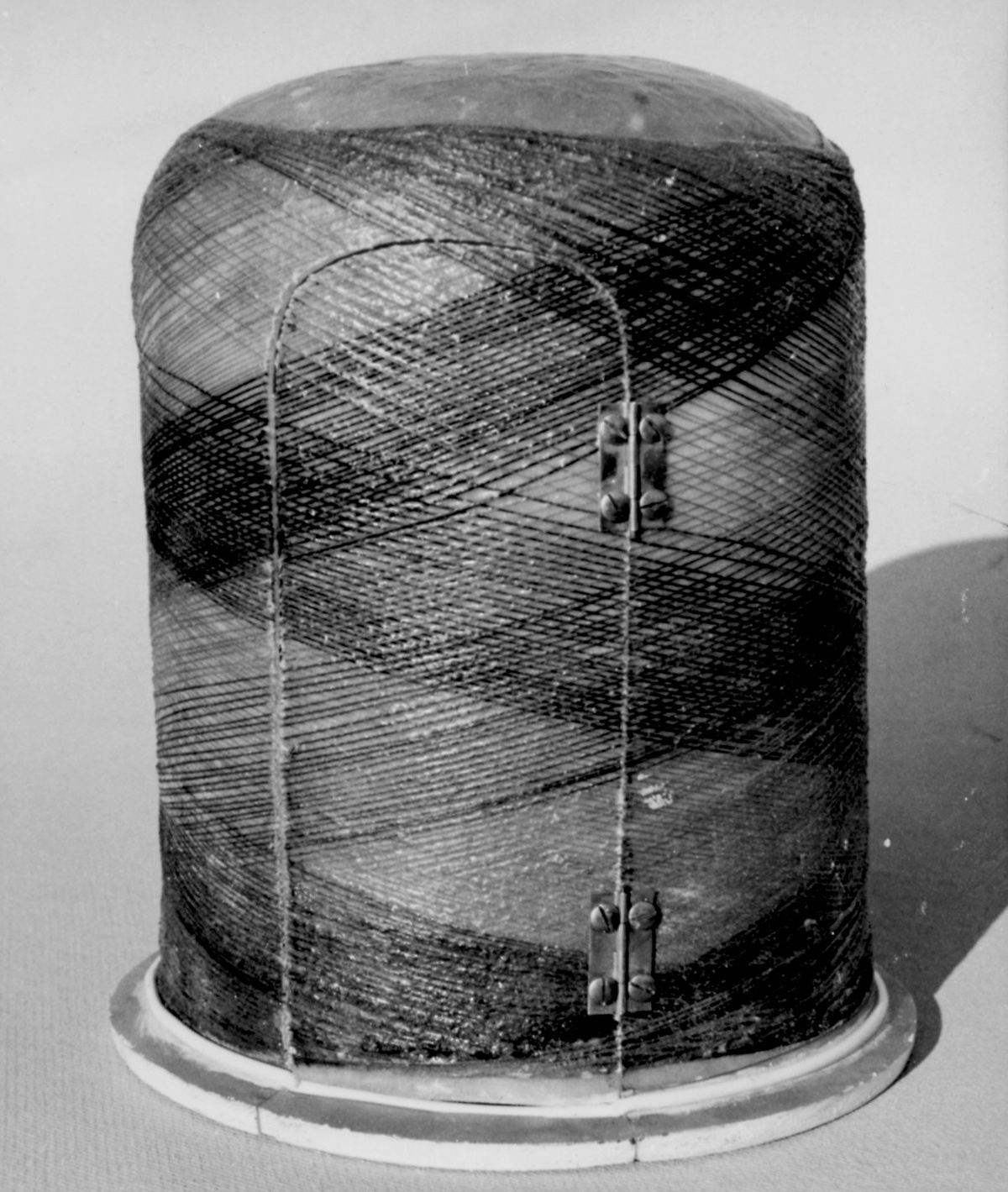
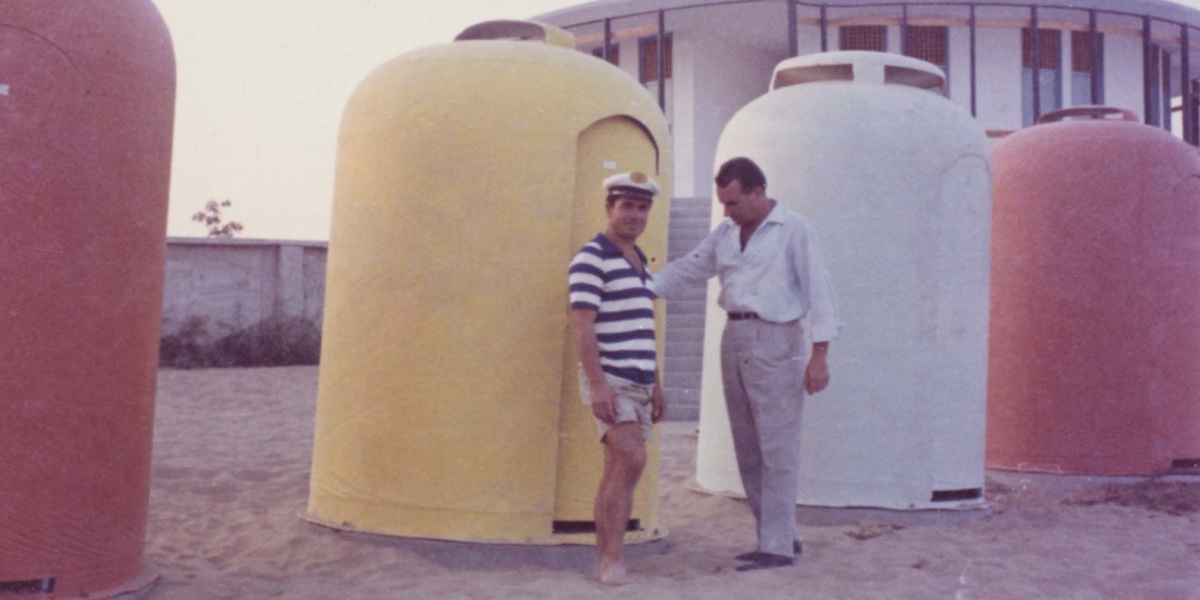
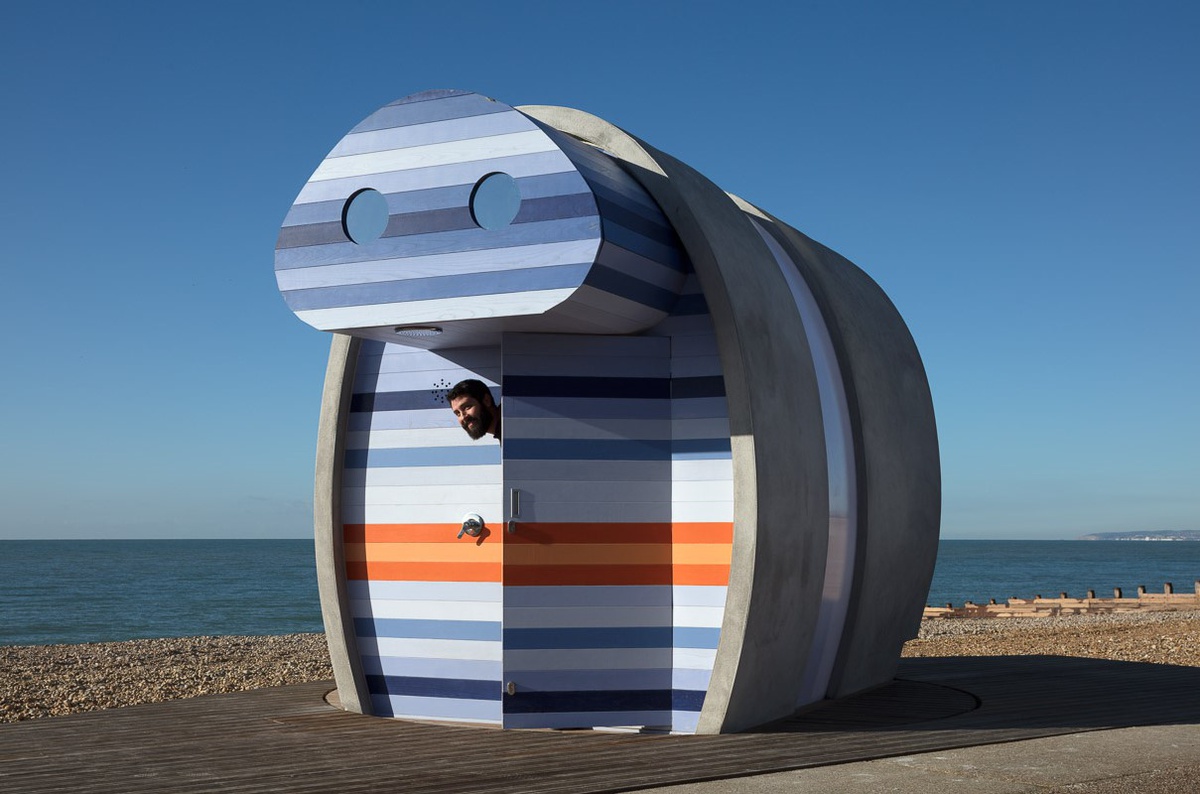
The “Spyglass Beach Hut” designed by Jak Studio in 2018 was designed to follow the sun. It is positioned on a rotating platform and can be controlled remotely. A glass wall affords a floor to ceiling view over the beach of Eastbourne.
It is not unusual to come across prefabricated toilets on a building site or at a concert. They were designed for emergencies. We can find small but beautiful, comfortable bathrooms in boats or trains; means of transport have always provided fertile ground for exercising style in minimal existential spaces.
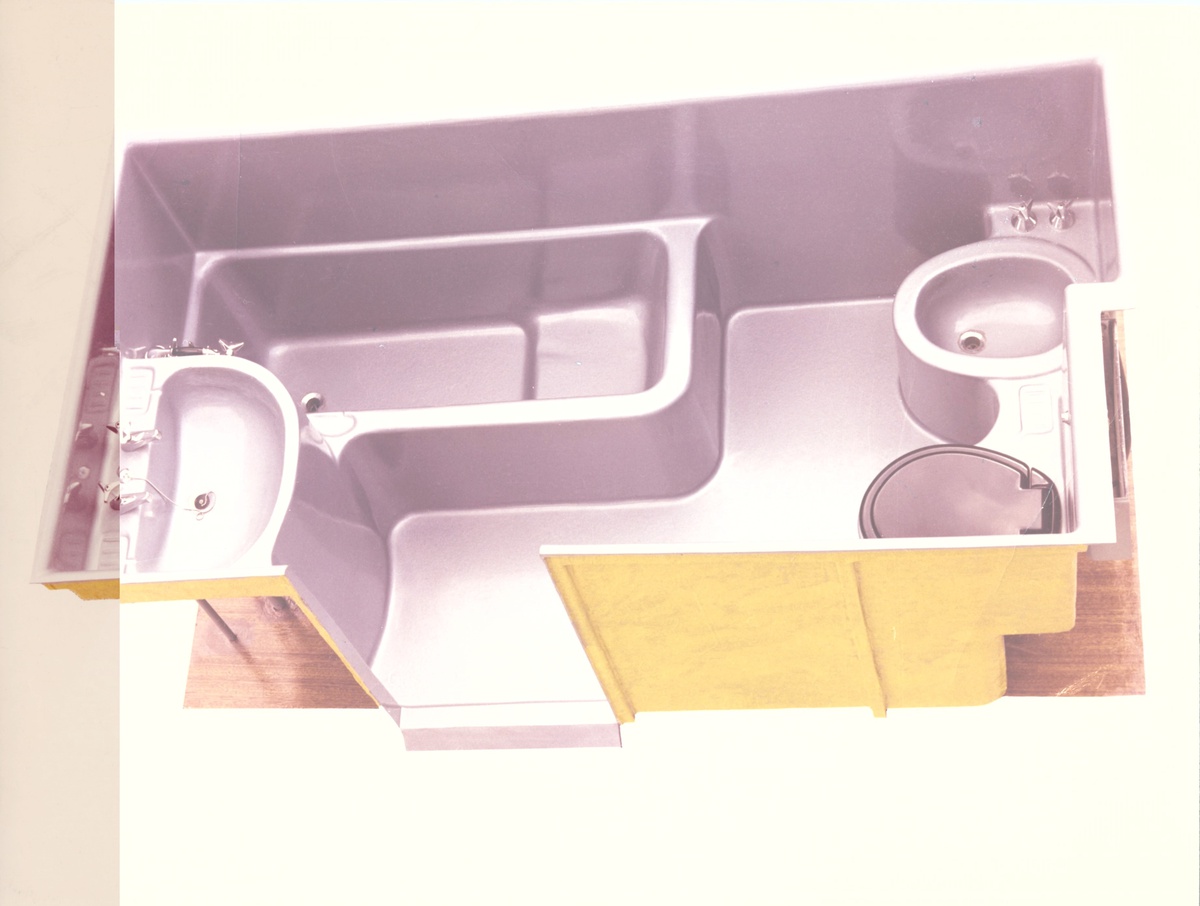
A Vetroresina© proposal from the Eighties: a bathroom pod with integrated sanitary facilities. An innovative, state-of-the-art project in terms of application of the material due to the size of the mould but also in terms of a product designed for places where strict hygiene rules are imposed and which is easy to clean.
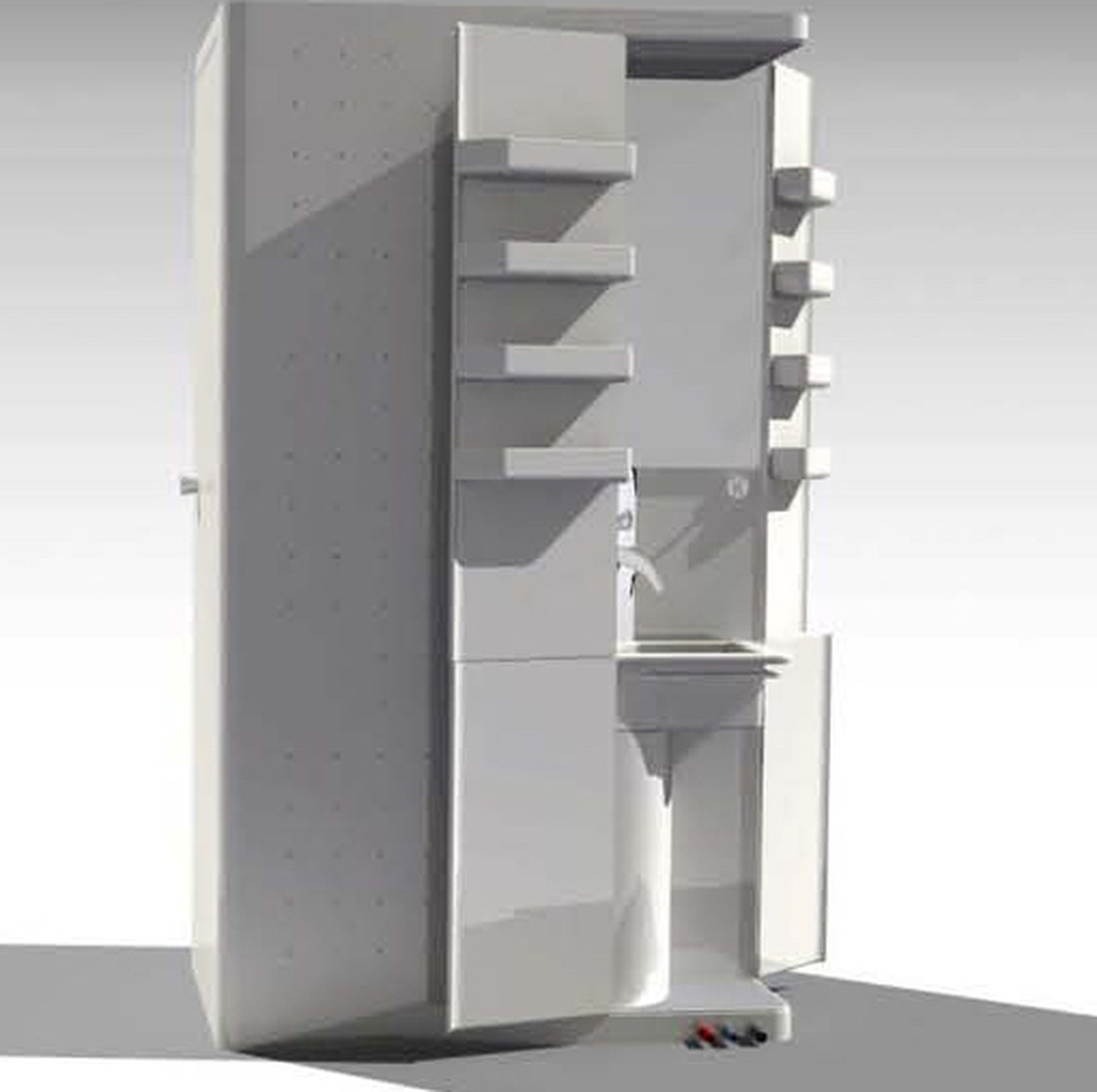
At the 2010 “UDESIGN-a map of the Design Industry in Friuli” exhibition, Carlo Toson presented a mobile bathroom pod fitted with shower, sink, WC and piping connections. Manufactured entirely in Corian by 3MC, it proposed a bathroom that was independent of a building’s architecture, designed to be a part of the furniture.
